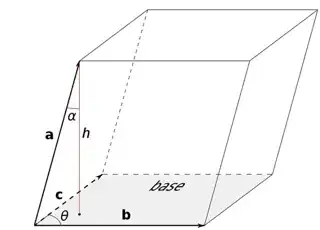The determinant can be defined recursively by Laplace expansion (LE), or equivalently, directly defined by Lebniz formula (LF) using parity of permutation.
My question is:
How do we see that these calculations indeed carry out the volumn of the parallelopiped expanded by row vectors of the determinant?
I found some explanations, all of which are not satisfactory for me.
- This answer utilizes diagnolization of matrix and then we see that the product of the eigenvalues is indeed the volume.
- This interactive textbook first defines the determinant to be an abstract multilinear function, and then work out the calculation formula, and finally proves by: The only function satisfying the defining properties of determinant is the determinant itself, and the volume of vectors satisfies these properties.
These explanations, without exception, all circumvents the calculation formulas (LE, LF). But I'm wondering this. Determinant is first discovered when solving system of linear equations and defined by LF. How do the earliest researchers, without knowledges of diagnalization, abstract multilinear functions, etc., sees that this definition (LE or LF) is just the volume of vectors?
One more thing. Please do not use the definition of cross product of vectors. Because this operation is also best calculated by formal determinant (as I see it). In fact, this question first came to me when I was thinking: Why the cross product, or the vector orthogonal to two given vectors with length equal to the area of the parallelogram, can be calculated by $$ \mathbf{v}_1 \times \mathbf{v}_2 = \begin{vmatrix} \mathbf{i} & \mathbf{j} & \mathbf{k} \\ x_1 & y_1 & z_1 \\ x_2 & y_2 & z_2 \end{vmatrix}$$

